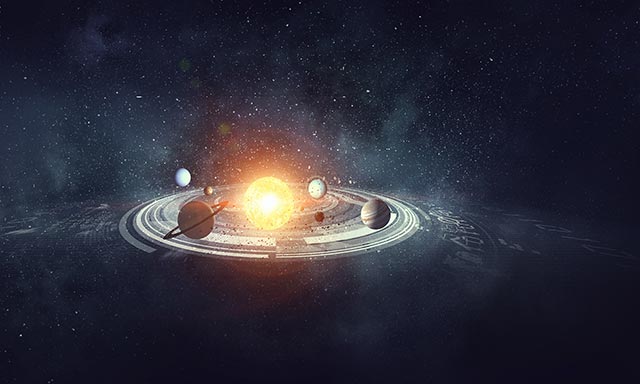Recurring bursts of cosmic radio waves reach Earth yet again
08/26/2020 / By Virgilio Marin

Astronomers predicted that a mysterious fast radio burst would repeat this July or August. And it did, as predicted, according to recent observations of the fast radio burst (FRB) called FRB 121102.
In June this year, an international group of researchers found that FRB 121102 repeats every 157 days. Such repeating FRBs are not unheard-of, however, this was only the second time that they were found to recur in a regular pattern. FRB 121102 was the second FRB observed to have a predictable cycle, with the first one having a mush shorter, 16-day cycle.
Scientists still do not know a lot about repeat FRBs. Although they are known to come from distant galaxies, their precise origin remains unknown. But with the study’s prediction turning out to be correct, the researchers can now narrow down the possible causes of the FRBs.
“Detecting a periodicity provides an important constraint on the origin of the bursts and the activity cycles could argue against a precessing neutron star,” said lead author Kaustubh Rajwade of the University of Manchester.
The findings of the study appeared in the Monthly Notices of the Royal Astronomical Society.
Predictions for fast radio burst 121102
FRBs are intense pulses of radio waves that occur within a span of a few milliseconds. It is estimated that they unleash as much energy in less than a second as the Sun does in a century.
More than 100 FRBs have been detected since their discovery in 2007. However, only a few of them repeat and fewer do so in a predictable pattern.
The first FRB to display such a predictable activity cycle is FRB 180916.J0158+65. These radio pulses are believed to come from a galaxy 500 million light-years from Earth. According to a recent study, radio pulses from this source reappear every 16 days. Scientists examined 38 bursts that were detected from September 2018 to February 2020. They discovered that FRB 180916 fires off bursts for about five days and then goes dormant for 11 days before going through another cycle.
The second FRB to display such a recurrent activity cycle is FRB 121102, located in a dwarf galaxy about three billion light-years away. In the present study, the researchers examined radio bursts from this source using the Lovell Telescope, a 250-foot-wide radio dish at Jodrell Bank Observatory in the United Kingdom. The team explained that FRB 121102 recurs every 157 days, becoming active for 90 days before going silent for another 67. They had previously predicted that it would reappear before August 28 this year. (Related: Scientists trace mysterious, short-lived radio bursts to a galaxy located 3.6 billion light-years away from Earth.)
However, calculations by other researchers came up with different results. A German team claimed that FRB 121102 repeats after 161 days based on their observations using the Effelsberg telescope. They also predicted that the current active period will end on October 14.
Meanwhile, an estimate by Chinese astronomers was much closer to that of the current study. Using the Aperture Spherical Radio Telescope in China, the researchers found that the FRB repeated after about 156 days. They added that the current active cycle of FRB 121102 will end somewhere between August 31 and September 9. But if FRB 121102 remains active beyond September 9, the researchers noted that the burst either evolved or that their predictions were incorrect.
Theories for the origins of repeating fast radio bursts
According to the current study, repeating FRBs are unlikely to be caused by cataclysmic events such as a supernova. Most of the bursts caused by such events are thought to flare only once and would never be detected again.
The team posited that a regular sequence in burst activity implies that repeating FRBs are linked to a large-scale cosmic phenomenon. Such a phenomenon may involve a neutron star orbiting a much more massive star. These stars may complete an orbit at around the same time in which a repeat FRB completes a cycle. When the stars begin a new orbit, Earth could detect pulses from the neutron star during times when its stellar companion is not obscuring it.
It’s also possible that a magnetar – a highly magnetized neutron star – could have a wobbly rotational axis. This could cause periodic flare-ups that could manifest over the span of a few weeks. This explanation is compatible with FRB 180916, which cycles every 16 days, but not with FRB 121102. (Related: Mystery from space: Scientists record three new fast radio bursts – could aliens be trying to communicate with us?)
With many questions still left unanswered, scientists are looking to study FRBs further and determine what cosmic events are involved during a radio wave burst and how they could be useful in space research.
Follow Cosmic.news for more news about weird and interesting phenomenon in space.
Sources include:
Tagged Under: cool science, cosmic, discovery, fast radio bursts, galaxy, magnetar, Mysteries, neutron star, outer space, Radio-signals, Space, space research, weird science
RECENT NEWS & ARTICLES
COPYRIGHT © 2017 DISCOVERIES NEWS



















